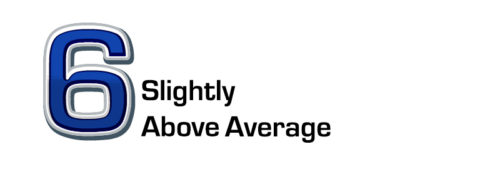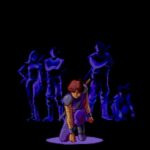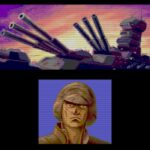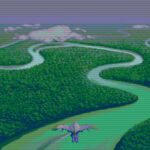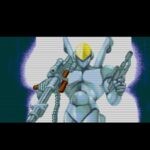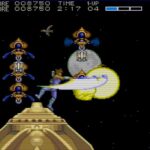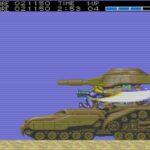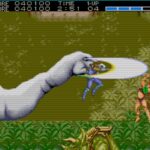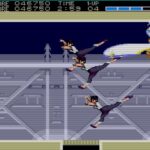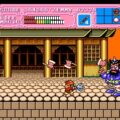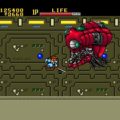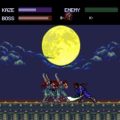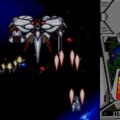Developer: Dice Creative Publisher: NEC Release: 09/22/94 Genre: Action
Strider was an arcade spectacle at release in the late 80s. The combination of Capcom’s art direction and one of the coolest characters in gamedom made a lasting impression on everyone who saw it. The Sega Genesis home port was one of the first landmark titles that made everyone take notice of that system’s capabilities. But as good as it was there were legends of an even better conversion for the PC Engine in Japan. I am exaggerating a bit but Strider Hiryu for the PC Engine was long in development and promised to be the definitive edition of the game. Ultimately it is not but is still a decent port nonetheless.
Strider Hiryu has an extensive development history spanning the majority of the PC Engine’s life cycle. Initially it was announced in 1989 as a Hucard title before potentially being upgraded to a Supergrafx game. How far along it was in development for NEC’s ill-fated upgrade is a mystery to this day. But seeing how well Ghouls n’ Ghosts and 1941 turned out I have no doubt it would have been spectacular. Years would pass before the game would finally re-emerge as a Super CD title. But even this change would not stop the game from going through further development trouble. At a time when the only information about import games came from short coverage in magazines like EGM rumors were rampant of multiple new stages and elaborate cutscenes. That would eventually turn out half true. The final release is decent but not what it was hyped up to be.
With the benefit of being on a CD and the use of the arcade card Strider Hiryu had the potential to be arcade perfect. Sadly it falls short of that lofty goal. The overall color palette is a close match to the arcade but it goes down from there. There is no parallax scrolling in any of the backgrounds leaving the beautiful environments flat. Background details are missing everywhere and there is heavy sprite flickering. For a game released at the tail end of the system’s life this is a disappointment.
There are some additions that do make use of the CD. The soundtrack is phenomenal and is in redbook audio. There is additional dialogue before every boss fight with new character art as well. The cutscenes between levels are a little longer and serve as an introduction to the next stage. But the biggest one is an entirely new stage. The oil refinery level exhibits the same level of creativity as the rest of the game as you move from one cool encounter to the next. It is so good in fact that I wish this were an entirely original title rather than an average port.
Regardless of the quality of the presentation this is still the Strider most are familiar with. Strider dazzled gamers with its fast action and awesome set pieces. As you move from one creative scenario to the next no two levels are similar as you travel through the streets of Russia, the optional oil refinery, the Amazon jungle and even an artificial moon. The pace is notably slower in this version as the scrolling is slower. The game stops at points, almost as if it is loading the next area. It is distracting but not game breaking. The hit detection has always been wonky in the series. But this version is especially wonky. Honestly I cannot say if it is bad or good but the strange behavior is noticeable. Despite some of these changes I found the game significantly easier than the arcade and Genesis versions.
This version of the game is significantly easier than the arcade for a variety of reasons. There are less enemies in every stage overall. The reduction in enemy count is handled well as there are enough to present a challenge without feeling cheap. Enemy placement has been changed as a result although you would have to be an arcade connoisseur to notice. Most notably most of the bosses have less HP, to the point some can die in seconds. My jaw dropped multiple times at how fast some of them went down. Checkpoints are more frequent reducing the frustration of death. Some of these changes are how the game should have been originally in my opinion. But I understand this was an arcade and so it needed your quarters.
In Closing
Strider Hiryu is a decent port despite its troubled development. While it does not live up to the hype it is still a good game. However considering the need for the CD add-on and arcade card it is not so good that it is worth tracking down at the prices it goes for.
